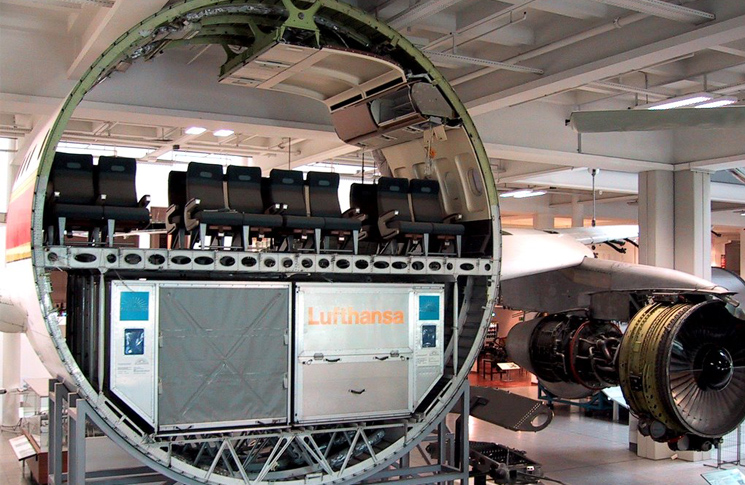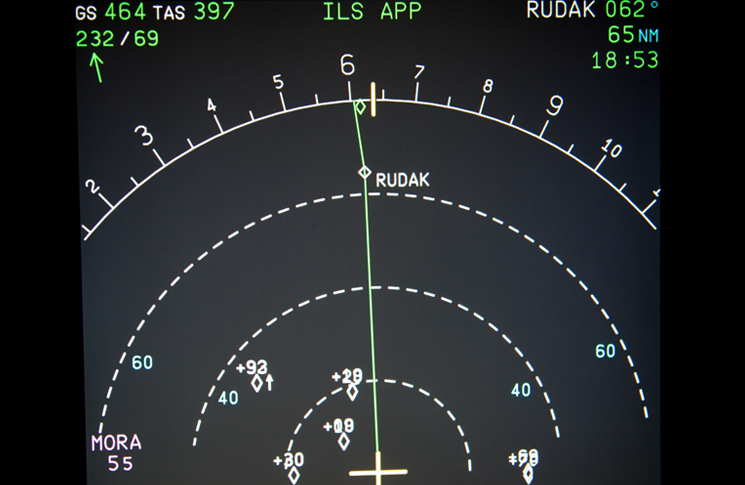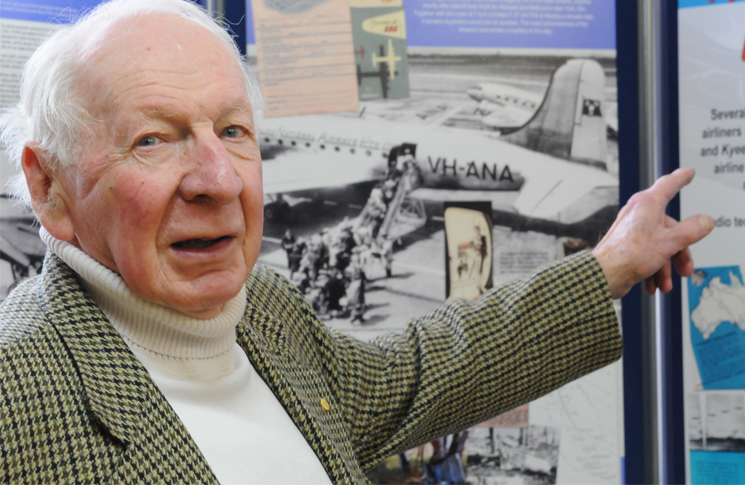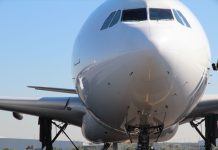Take-off safety speeds
In the early days of aviation taking off from an omnidirectional all-over field was simple: open the throttle and pull the stick back when it starts to fly. Taking off in large, complex aircraft requires more than this. Defined take-off safety speeds mark a series of decision points in the process. V1, for instance, is known as the take-off decision speed. Beyond this speed, the aircraft is committed to flying even if an engine failure occurs – usually because there’s not enough remaining runway to stop. Other defined speeds such as Vr (V rotate, the speed at which the nose wheel leaves the ground) and V2 (the speed at which an aircraft can safely become airborne with one engine inoperative). All these parameters are subject to take-off conditions, including aircraft weight, flap setting and engine thrust.
Turbine engine bird ingestion standards
Orville Wright noted the first recorded aviation bird strike in his diary for 1905. The worst confirmed bird strike disaster was in December 1960, when Eastern Airlines Flight 375, a Lockheed Electra, crashed during take-off, killing 62 of the 72 people on board. Three of the four engines had ingested birds during take-off. It was discovered that the engine was particularly vulnerable to these bird strikes, prompting the US Federal Aviation Administration (FAA) to look at ways to mitigate the risk of such an incident happening again. One method the FAA has employed is to set up minimum standards for turbine engines when subject to bird strikes. As per Federal Aviation Regulation Part 33, turbine engines must be able to demonstrate that they can comply with the regulation via a bird strike test – the so-called chicken cannon. This test involves the launching of a bird carcass at the engine’s most critical exposed location. Below is a video showing such a test on the GE 900 turbofan engine. See 1 min 50 for bird strike test.
Wildlife management
Wildlife/bird strikes are devastating to aviation, both physically and financially, costing the industry around US$1.2 billion each year.
The Australian Transport Safety Bureau (ATSB) reports that wildlife-related incidents accounted for 23 per cent of all non-serious incidents for civilian air transport between 2002 and 2011 and have doubled over the last decade. This has been driven by an increase in high-capacity aircraft movements, along with improved strike reporting, increasing urbanisation and faster, quieter aircraft.
In an effort to reduce these incidents, aerodromes have tried almost everything to deter birds from nesting near flight paths. But no matter how disturbing the tactics might be, animals adapt – meaning there’s no single ‘fix’ for the problem. It’s widely accepted that wildlife strikes will always be part of aviation life and no amount of killing or relocation alone will negate the possibility of aircraft coming into contact with one or more of the many local wildlife species. This has led most Australian aerodromes to use a variety of preventive measures (including grass, water, waste and tree modification, as well as auditory and visual repellents) to supplement the more aggressive methods of relocation and shooting. Part 139 of the Australian Civil Aviation Safety Regulations requires certified aerodromes to have procedures in place for dealing with birds and other wildlife posing a danger on and around the aerodrome.
Unit load devices (ULD)
Unit load devices (ULDs) are those big silver boxes you see being loaded into the cargo hold of an aircraft before flight. They might seem mundane, but they perform a critical safety task by securing luggage and freight. They also provide a much-improved way of transporting dangerous goods – allowing potentially dangerous cargo to be isolated in individual environments, so if there is a fire, spill or breach of some form; the damage can be contained and prevented from spreading to other cargo. The other major safety advance the ULD has provided to aviation is the ability to more accurately measure, disperse and secure cargo weight throughout an aircraft. With the weight and balance of an aircraft greatly affecting its flight performance, unsecured cargo moving around in the hold can have fatal consequences for those on board, as displayed by a 747 freighter carrying military equipment in Afghanistan.

Flight Safety Foundation
A non-governmental organisation, founded by Jerome F. ‘Jerry’ Lederer (1902-2004) in 1947, the Flight Safety Foundation has initiated projects and developed products to reduce risk and improve aviation safety worldwide.
Among its significant accomplishments are: the first civil aviation accident investigation workshop; the first computer modelling of accident forces, which led to the improvement of passenger restraint systems; initial studies of (and early support for) the use of basic aviation safety devices such as anti-collision lights and airborne weather radar; the first international, confidential pilot safety-reporting system, which became a model for other programs; the first collection and distribution of aircraft mechanical malfunction reports; initial studies that became the basis for international medical standards for pilots and air traffic controllers; and the first technical work on explosion-resistant helicopter fuel tanks, which have been credited with saving thousands of lives.
The foundation has two offices, one in Virginia, near Washington DC in the US, and the other in Melbourne.
Upset recovery
In the 21st century a disturbing trend emerged in airline crashes. Perfectly functional aircraft were crashing after their crews lost control. Such accidents took place in Egypt, Lebanon, the Netherlands and over the Atlantic Ocean. An urgent emphasis has developed on training and assessing flight crews for skills in upset recovery (Also known as recovery from unusual attitudes [UA]). This is the ability to take control of an aircraft in an abnormal flight situation and return it to safe flight. Upsets can include high-altitude stalls, which typically are not trained for, sudden and unexpected reversion to manual control, or spatial disorientation. Training for these involves procedures such as managing the natural startle response, effectively monitoring automation, and being capable of reversion to flight using basic instruments and principles of power and attitude. Upset recovery training, in its various forms, is now on the agenda of air carriers, training organisations and national regulators.
Volcanic ash detection
Volcanic ash emerged as an aviation issue in 1982, when British Airways flight 9 encountered an ash cloud over Indonesia that stopped all the Boeing 747’s four engines. That event, and a similar emergency for a KLM 747 over Alaska in 1989, led to the setting up of a worldwide network of volcanic ash advisory centres by ICAO. The problem is that volcanic ash acts as an airborne abrasive to airframes and windows and melts into a glassy substance that clogs jet engines. In 2010 the eruption of Eyjafjallajökullin Iceland caused the cancellation of flights across Europe. That event gave impetus to developing aircraft-based systems for detecting volcanic ash. These would enable aircraft to operate safely away from ash, but closer to it than is currently permitted, because of their ability to detect and avoid ash in real time. British airline EasyJet is trialling such a system.
TCAS/ACAS
A traffic collision avoidance system (TCAS), also known as an airborne collision avoidance system, is a combination of radio and computer that ‘interrogates’ the transponders of nearby aircraft, obtains information on their speed, height and direction, and computes whether there is any risk of collision. TCAS systems issue two levels of alert to pilots. A traffic advisory lets the pilot know other aircraft are nearby and could pose a collision hazard if they change course or speed. A resolution advisory is an instruction, delivered in stern and simple words, to take action to avoid a likely collision. There are also visual prompts on flight displays.
The only collision since the widespread use of TCAS, the Überlingen disaster of 2002, involved one flight crew not obeying a resolution advisory (instead it obeyed the air traffic controller’s mistaken instruction). A horrifying near miss between two wide-body airliners over Japan in 2001 also involved a resolution advisory being ignored. Because of this the latest version of the system (TCAS 7.1) includes resolution advice reversal logic, should either crew not follow its instructions. In such a situation TCAS 7.1 will bark ‘Level off! Level off!’ at the pilot.
Similar in principle to TCAS is the FLARM system used by gliders to detect each other. This system is not compatible with TCAS and is invisible to it.
Type clubs
Fish school together for safety in numbers, and so should aircraft owners and operators. Type clubs foster a healthy culture and information exchange that directly relates to aviation safety. These aircraft communities serve an ever-increasing role in the life of their aeroplanes. As forums, bringing together people and information, they have benefited greatly from the growth of the internet. Modern type clubs facilitate an exchange of ideas across the globe. For example, the Australian Bonanza Society’s affiliation with its American counterpart allows access to a vastly greater number of aircraft and owners and the resultant knowledge base.
Weather forecasting
Even in the era of double-deck airliners weighing 540 tonnes weather is one of the major safety elements in aviation. It was even more so in the wood and cloth era, which was when the US Weather Bureauestablished an aerological section in 1914 to provide weather forecasts specifically to meet the growing needs of aviation. The Australian Bureau of Meteorology had dedicated aviation weather forecasters in 1937.
Weather forecasts are now delivered in flight to aircraft that use the ACARS (aircraft condition and reporting system). General aviation pilots are able to make use of online forecasts that can be downloaded minutes before take-off. But, according to the US National Oceanic and Atmospheric Administration, weather remains a factor in up to half of aviation accidents.






After35years of flying weather is still my biggest worry it would be a great help to make weather reporting as simple as possible because as a private pilot who flies intermittently it is easy to missread the weather report.the I pad I use makes life easier .the same thoughts come from anyone who does the same amount of flying I know that we are all supposed to keep up the standard but if we are truthful this is impossible .